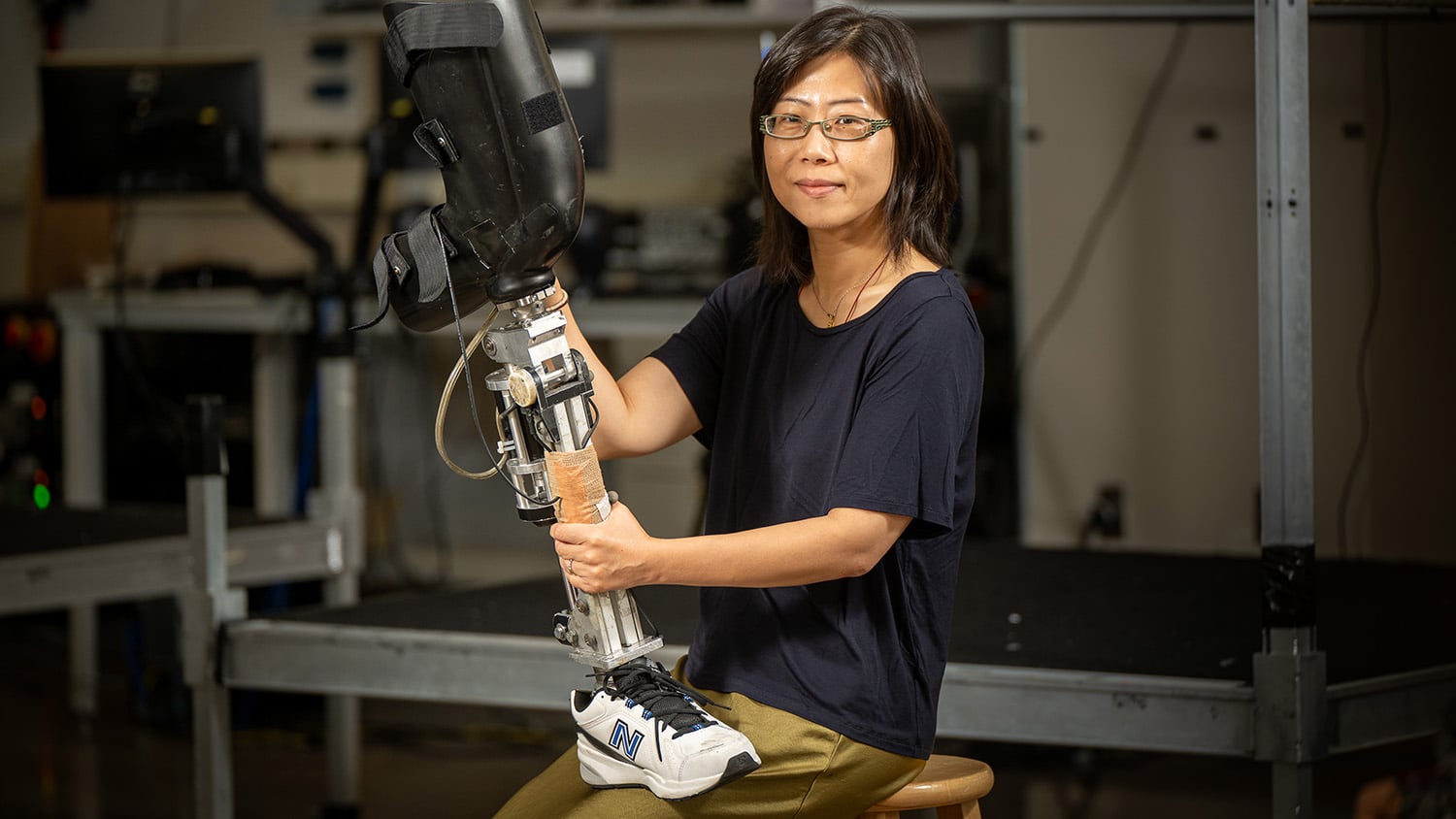Researchers have developed an innovative algorithm that enhances the functionality of robotic prosthetic devices for amputees. This new approach not only optimizes the movement of the prosthetic limb but also promotes a more natural walking pattern for users. The goal is to address health issues often associated with limb loss, particularly those affecting the hip and lower back.
Varun Nalam, co-lead and co-corresponding author of the study, emphasized the significance of this advancement. “Algorithms designed to improve the behavior of robotic prosthetics are not new, but this is the first algorithm that also holistically improves the physical behavior of the person interacting with those prosthetics,” said Nalam. He is an assistant research professor in the Lampe Joint Department of Biomedical Engineering at North Carolina State University and the University of North Carolina at Chapel Hill.
The research highlights that amputation above the knee can alter the movement of other body parts, potentially leading to issues such as lower back pain and hip problems. Traditional robotic prostheses have primarily focused on replicating the movement of the missing joint. For instance, previous software for controlling robotic knees primarily aimed at optimizing the knee’s movement without considering the user’s overall body mechanics.
Innovative Approach to Prosthetic Control
Nalam outlined the dual objectives of the new algorithm: ensuring proper function of the prosthetic knee while also allowing the user’s body to move as naturally as possible, similar to pre-amputation. This comprehensive approach not only restores leg motion but also mitigates discomfort in the lower back and hips.
The research builds upon earlier work in which the team developed a system for “tuning” powered prosthetic knees, making adjustments that allowed patients to walk comfortably within minutes, as opposed to the lengthy processes required by trained professionals. This earlier system used reinforcement learning to optimize prosthetic control.
According to Helen Huang, senior author and the Jackson Family Distinguished Professor of Biomedical Engineering, the new algorithm incorporates inverse reinforcement learning. This innovation considers the movements of both the prosthetic knee and the user’s hip, facilitating a more synchronized interaction.
The researchers conducted proof-of-concept testing by monitoring the movements of both the robotic knee and the user’s hip through sensors. “The new algorithm essentially accounts for the movement of both joints and adjusts the behavior of the prosthetic knee to help the user exhibit their natural hip movement,” Nalam explained. While the current study focused on hip movement, Huang noted that the algorithm could also potentially enhance trunk movement, walking symmetry, and other locomotor behaviors.
Study Findings and Future Directions
In their study, the researchers recruited five participants, two of whom had undergone above-the-knee amputations. The group performed various tasks using a robotic prosthetic knee under two conditions: one using traditional knee control software and the other incorporating the new algorithm.
The findings revealed that the new algorithm significantly improved hip range of motion for all participants, indicating a positive impact on hip health. Nalam noted, “We also found that the new algorithm changed the gait of our study subjects in ways that indicate that movement felt more natural for users. For example, they took longer steps when walking.”
Looking ahead, Huang expressed interest in collaborating with clinicians to assess the algorithm’s long-term effects on user well-being. Additionally, the researchers aim to engage with companies that manufacture robotic prosthetics to explore how this approach can be integrated into existing systems.
From a research perspective, Nalam highlighted the intention to further investigate how this algorithm could address various human locomotion behaviors. The findings are documented in the paper titled “Addressing Human-Robot Symbiosis via Bilevel Optimization of Robotic Knee Prosthesis Control,” published in the journal IEEE Transactions on Robotics.
This research was supported by the National Science Foundation under grants 2211739 and 2211740, showcasing a commitment to advancing technology that can significantly improve the quality of life for amputees.



























































